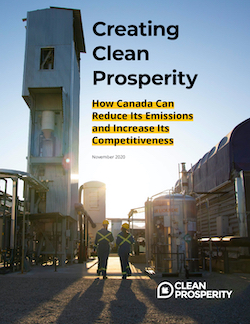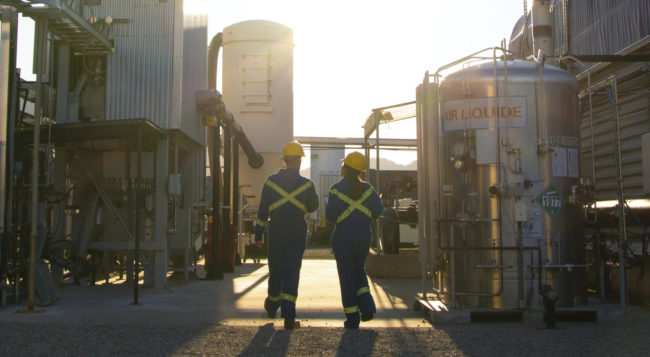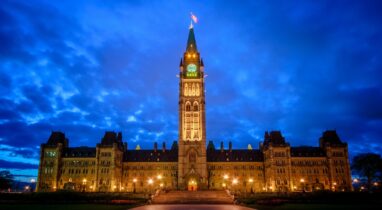As the Canadian government prepares to introduce a more ambitious climate plan in the coming days, Clean Prosperity today released a strategy to reduce Canada’s greenhouse gas emissions while growing the low-carbon economy of the future.
Clean Prosperity recommends that the federal government adopt a carbon pricing plus approach to reach Canada’s 2030 and 2050 emissions-reduction targets:
- Increase the carbon price by $10/tonne per year through 2040.
- Catalyze the market for atmospheric carbon removal.
- Enact a package of regulations and investments that complement carbon pricing, such as building retrofits and more stringent limits on methane emissions.
Carbon pricing alone can close most of the gap to Paris, assuming the price continues to rise by $10/tonne per year through 2030. Carbon pricing could reduce 50% more emissions if the current output-based pricing system changed to a full carbon price on industry, combined with a border carbon adjustment. This change could also help Canadian industry compete in the low-carbon economy, especially if President-elect Biden makes good on his promise to enact his own border carbon fee.
Carbon pricing is equally critical for reaching net zero. A $10 per year increase in the carbon price between now and 2040 could deliver half the emissions cuts needed to get to net zero. Increasing the price by $15 per year would close 60% of the gap.
Carbon rebates will rise too. By 2030, the average Ontario household could be receiving more than $1,600 per year in carbon tax rebates—rising to $3,600 in Saskatchewan and $5,600 in Alberta.
“The carbon pricing plus approach we recommend can help Canada reduce emissions and increase competitiveness,” said Clean Prosperity Executive Director Michael Bernstein. “A rising carbon price will accelerate the growth of our cleantech sector, where we have trailblazing companies in everything from hydrogen to direct air capture to geothermal energy. With the right policies, we can support these companies in becoming global leaders, generating good jobs and economic growth in the process. Done right, our climate policy can help Canada generate clean prosperity.”
Quick Facts
- By 2030, if the carbon price increases by $10/tonne per year, it will cut annual emissions by 71 Mt. Cuts would increase to 141 Mt if the output-based pricing system is replaced with full industrial pricing plus a border carbon adjustment.
- By 2040, a rising carbon price would reduce emissions by 250 Mt, closing 50% of the gap to Canada’s 2050 net-zero target. Increasing the price of carbon by $15/year through 2030 would generate 319 Mt of reductions by 2040, representing 60% of the net-zero gap.
- The cost per tonne of direct air capture (DAC) could drop below the carbon price around 2035, encouraging market scale-up of this key technology. DAC could generate 250-500 Mt of net emissions reductions by 2050.
- Canadian oil and gas GDP would grow by 8% through 2030 under a rising carbon price.
Read the report

For more information: media@cleanprosperity.ca




